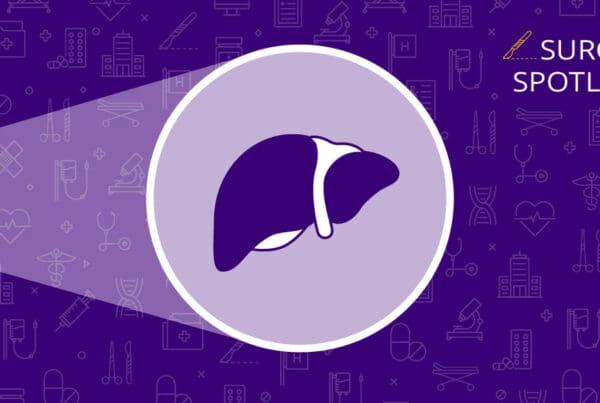Highlights | Pain points in pain management
- More than 10 million Americans abuse opioid prescriptions each year.
- Pain is a complicated biological response linked to emotional factors.
- Changing the way healthcare providers assess patient pain could provide better treatment.
For centuries, doctors have debated the best way to help patients with chronic pain. Twenty years ago, opioids were the answer. These highly addictive medications mask pain by attaching to protein receptors on nerve cells.
Soaring addiction rates nationwide show using opioids for long-term pain relief is a mistake. A growing body of research also reveals the long-misunderstood relationship between pain and opioids.
In their recently published book, The Right to Pain Relief and Other Deep Roots of the Opioid Epidemic, UW Medicine pain experts Mark Sullivan, MD, PhD, and Jane Ballantyne, MD, FRCA, explore how doctors and patients have misused these drugs and how opioids affect the brain. Their research refutes misconceptions that lead doctors to prescribe opioids.
“Early advocates of increased opioid prescribing thought they would do more than lower the pain they saw in the clinic. They thought opioids would lower the level of pain and suffering in the world,” says Sullivan, a psychiatrist at the Center for Pain Relief at UW Medical Center — Roosevelt. “They were wrong.”
Impact of the opioid epidemic
The nationwide push to help relieve or eliminate chronic pain increased in the late 1990s. It launched the U.S. into a 20-year opioid epidemic. Doctors are more careful today when prescribing opioids for pain relief. But the problem still exists.
According to the U.S. Department of Health and Human Services, 10.1 million people abused opioid prescriptions in 2021. Approximately 1.6 million people had an opioid use disorder during the same year. Additionally, these medications played a part in roughly 75% of all drug overdose deaths in 2020, including suicides.
To figure out where things went wrong, we must look at the existing and emerging science on pain.
The pain–brain connection
Pain is as personal as a fingerprint, says Ballantyne, a professor of Anesthesiology & Pain Medicine at UW School of Medicine. To better understand it, doctors should examine how the brain naturally tries to handle discomfort.
“Functional MRI scans show how the brain is affected when pain goes from acute to chronic,” she says. “It goes to completely different areas of the brain and ends up stuck in emotional areas.”
Investigators have learned that the brain tries to adapt to pain and reach a balance.
“Your internal opioid system, including endorphins, tries to control pain naturally. It’s actually very effective on its own,” Ballantyne says. “When you take an opioid-like prescription, you override and disable that internal system.”
For example, mindfulness and cognitive behavioral therapy can reduce pain if a patient’s natural opioid system is working. But those strategies won’t work as well if they take an opioid medication.
Research also shows taking opioids long-term can cause depression in patients with chronic pain; and these patients don’t report having less pain.
Based on what we know now, Sullivan and Ballantyne address misconceptions about pain and management.
Fundamental misunderstandings
Sullivan and Ballantyne reject the idea that pain is only a physical problem.
“Pain isn’t something we can measure and eliminate without considering other aspects of human suffering,” Sullivan says. “Pain is involved with other forms of suffering, including depression, anxiety, loneliness, abuse or trauma.”
Patients with chronic pain frequently have these problems. But other therapies, including mindfulness and cognitive behavior therapy, often get overlooked in favor of opioid prescriptions.
Reassessing the approach to chronic pain
Given the dangers associated with using opioids to treat chronic pain, Sullivan and Ballantyne suggest two changes to how healthcare providers evaluate and address pain. First, they suggest abandoning the Pain Intensity Scale. This measurement asks patients to rate their pain from zero to 10.
“We believe this scale distorts care. It takes a complex human experience and reduces it to a single number,” Sullivan says. “It’s also based on the belief that to treat pain, you must reduce its intensity. That’s not true. Other tactics, like cognitive behavioral therapy, can help patients manage pain without reducing its intensity.”
Second, they recommend changing how we think about the medical necessity of treating pain. They say providers should evaluate whether intervening for all unrelieved or intense pain is necessary.
Sullivan and Ballantyne also suggest physicians take a multidisciplinary approach to the physical, mental and emotional aspects of addressing pain. For example, doctors should recommend only short-term courses of opioids, such as for post-surgery pain relief.
“Doctors should treat opioids like steroids. We learned a century ago that short-term steroid treatment for conditions like asthma or poison ivy is fine. Anything more is disastrous. It potentially causes pathological fractures, ulcers and even psychosis,” Sullivan says. “We can learn a similar lesson with opioids. Short-term, they’re a great tool that stays relatively focused on pain for a few days. Anything longer than that, and you get a wide range of bad outcomes.”


